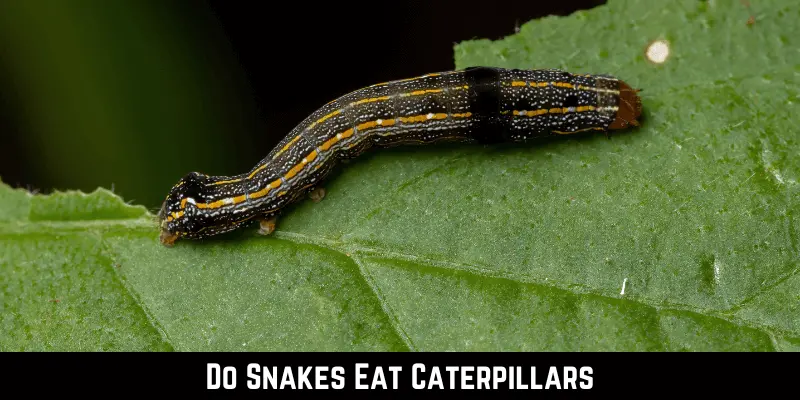Snakes are well-known for their wide-ranging diets in the natural world. These interesting animals have learned to eat everything from tiny insects to big mammals. But do they also eat smaller, softer foods like caterpillars? Do Snakes Eat Caterpillars?
Yes, snakes will eat caterpillars. Even though snakes and caterpillars might seem like an odd pair, they have a special bond and are important to maintaining the delicate balance of our planet’s ecosystems.
In this article, you’ll learn how something as simple as a snake’s diet can show how complicated and interconnected the natural world is. If you want to learn more about this interesting ecological story, keep reading.
Snake Species and Diet Variations
A snake’s diet can vary based on its species, size, age, and geographic location. Some snake species have a more general diet, while others specialize in their food preferences.
| Snake Species | Primary Diet | Secondary Diet | Tertiary Diet |
| Ball Python (Python Regius) | Small mammals (like rats) | Birds | Bird eggs |
| Eastern Diamondback Rattlesnake (Crotalus Adamanteus) | Small mammals (like rabbits) | Birds | Amphibians and reptiles |
| Green Anaconda (Eunectes murinus) | Large mammals (like capybara) | Birds | Fish |
| King Cobra (Ophiophagus Hannah) | Other snakes | Lizards | Small mammals |
| Garter Snake (Thamnophis Sirtalis) | Earthworms and amphibians | Small fish | Small mammals |
| Corn Snake (Pantherophis Guttatus) | Small mammals (like mice) | Bird eggs | Frogs and lizards |
| Boa Constrictor (Boa Constrictor) | Small to medium-sized mammals | Birds | Reptiles |
| Black Mamba (Dendroaspis Polylepis) | Small mammals (like rodents) | Birds | Frogs and lizards |
| Eastern Coral Snake (Micrurus Fulvius) | Other snakes | Lizards | Small mammals |
| King Brown Snake (Pseudechis Australis) | Small mammals (like rodents) | Birds | Reptiles |
The Snake-Caterpillar Relationship
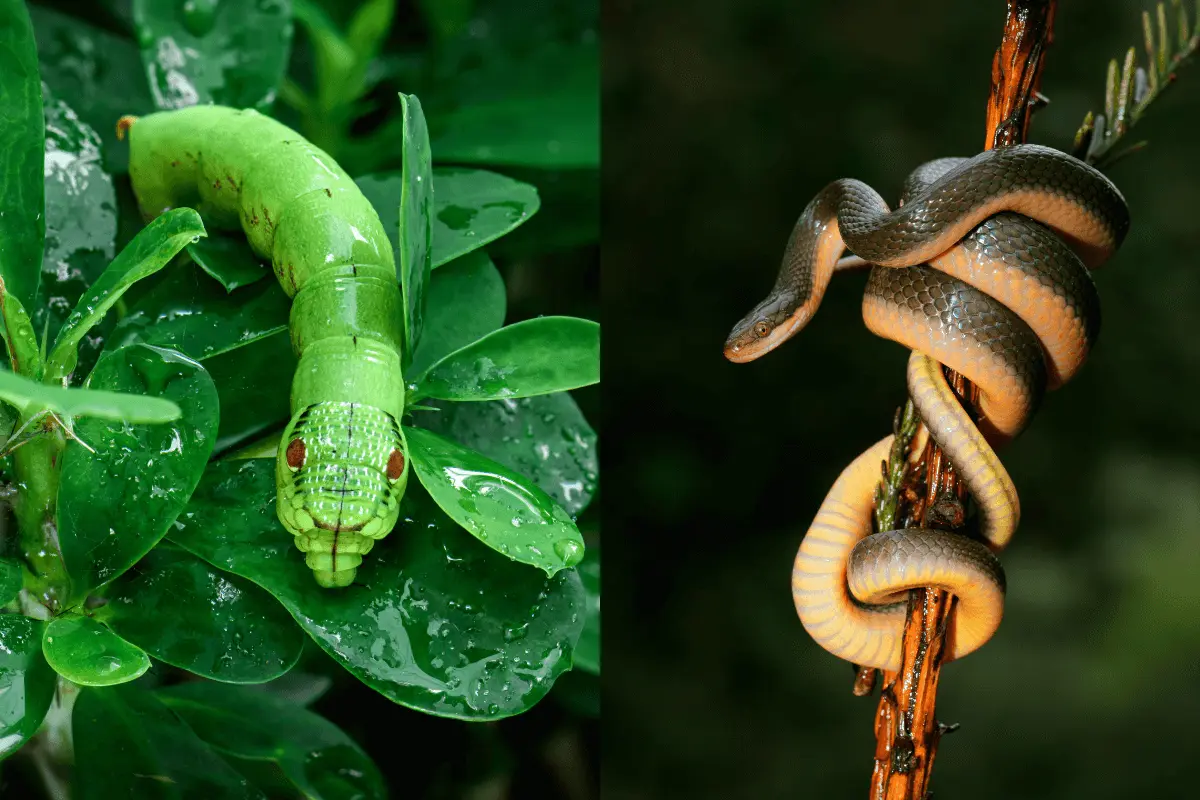
Predator-Prey Dynamics
A predator’s and its prey’s dynamics characterize the interaction between a snake and a caterpillar. Caterpillars are a common food source for many snake species, especially those that have adapted to eating a diet full of invertebrates.
This eating behavior has a big effect on local environments because it helps control the number of caterpillars, which in turn affects the health and variety of plant life. If there are a lot of caterpillars, they could eat all the leaves, upsetting the balance in the environment. Therefore, snakes are important for ecological balance because they eat caterpillars.
Camouflage and Mimicry
The interesting interactions between snakes and caterpillars involve more than just predation. They also involve hiding and mimicry. Batesian mimicry, in which some caterpillars have evolved to look like snake heads, is a defense strategy. These caterpillars have big, obvious markings that resemble a snake’s eyes. This scares away potential predators and gives them a better chance of survival.
Seasonal Interactions
Changes in the seasons can significantly impact the snake-caterpillar relationship. During the warmer months, when caterpillars are easy to find, snakes that eat them do well because they are an easy food source. This can cause snake numbers to grow, which has a ripple effect on the whole ecosystem.
On the other hand, during colder months caterpillars are in little supply or undergoing metamorphosis. Snakes must change their feeding habits to take advantage of other available prey.
Coexistence in the Food Web
The coexistence of the snake and the caterpillar is an example of how the food web works. When snakes eat caterpillars, it reduces the population of caterpillars and, in turn, protects plants from being over-eaten.
At the same time, snakes are eaten by bigger animals, passing the energy from caterpillars to higher levels of the food chain. This transfer of energy from the lowest to the highest trophic levels highlights the interdependence of all living things and the significance of every species in preserving ecological balance.
The relationship between a snake and a caterpillar is an amazing representation of how complex ecological interactions can be. It shows nature’s important balance of power, survival tactics, and the never-ending cycle of life and death.
Which Snakes Eat Caterpillars?
Ringneck Snake (Diadophis Punctatus)

The Ringneck Snake is a native of North America. It is named after the bright ring that covers its neck. This shy snake mostly hides in leaf litter, dirt, or under rocks. It eats various small insects, but caterpillars are one of its favorites.
Ringneck Snakes have a unique way of hunting. They use mild venom to make their food stop moving before eating it. This makes them excellent predators of caterpillars and other similarly soft-bodied insects.
Rough Green Snake (Opheodrys aestivus)
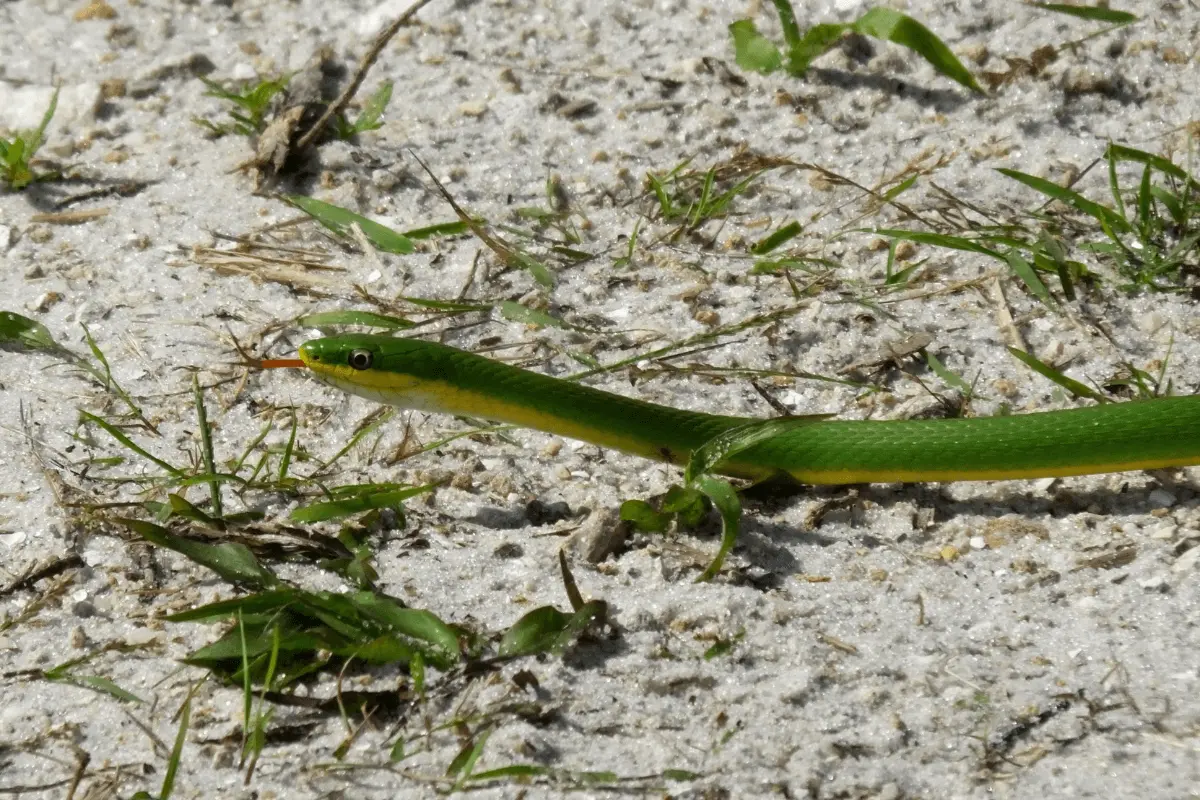
The Rough Green Snake’s bright green skin helps it blend in with plants. This tree-dweller enjoys the flavor of many different kinds of insects, especially caterpillars, spiders, and grasshoppers.
The tiny body of this snake, native to the southeastern United States, allows it to glide silently through the branches, where it waits for unsuspecting caterpillars to wander. Rough Green Snakes are known for being friendly but not poisonous. Instead, they use their quick reactions and good aim to catch prey.
Eastern Garter Snake (Thamnophis Sirtalis)
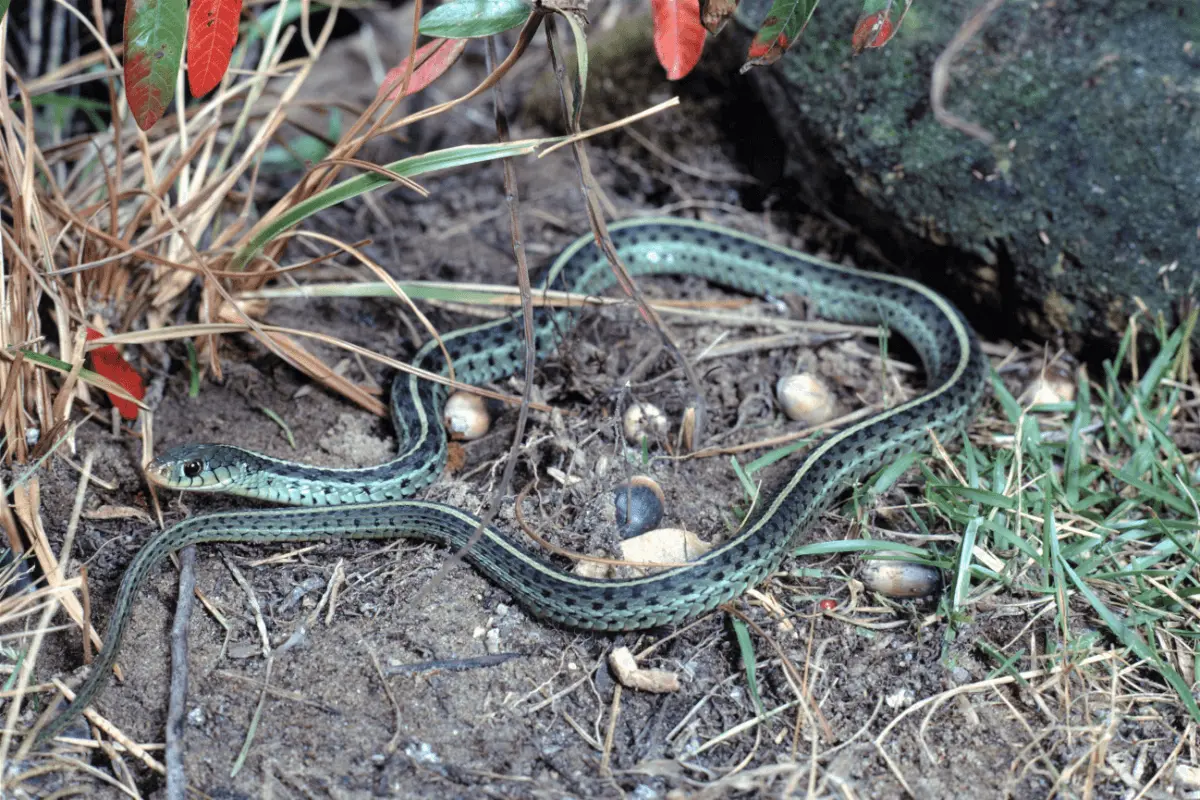
The Eastern Garter Snake is well-known for its adaptability because it can survive in many different environments across North America. Their staple foods are frogs and earthworms, but when those aren’t around, these opportunistic eaters will chow down on caterpillars.
Their small, flexible jaws make it possible for them to eat such soft prey. When it comes to getting a meal, Eastern Garter Snakes show an unexpected level of persistence, often using both their keen teeth and rigidity to control their prey.
Brown Tree Snake (Boiga irregulars)
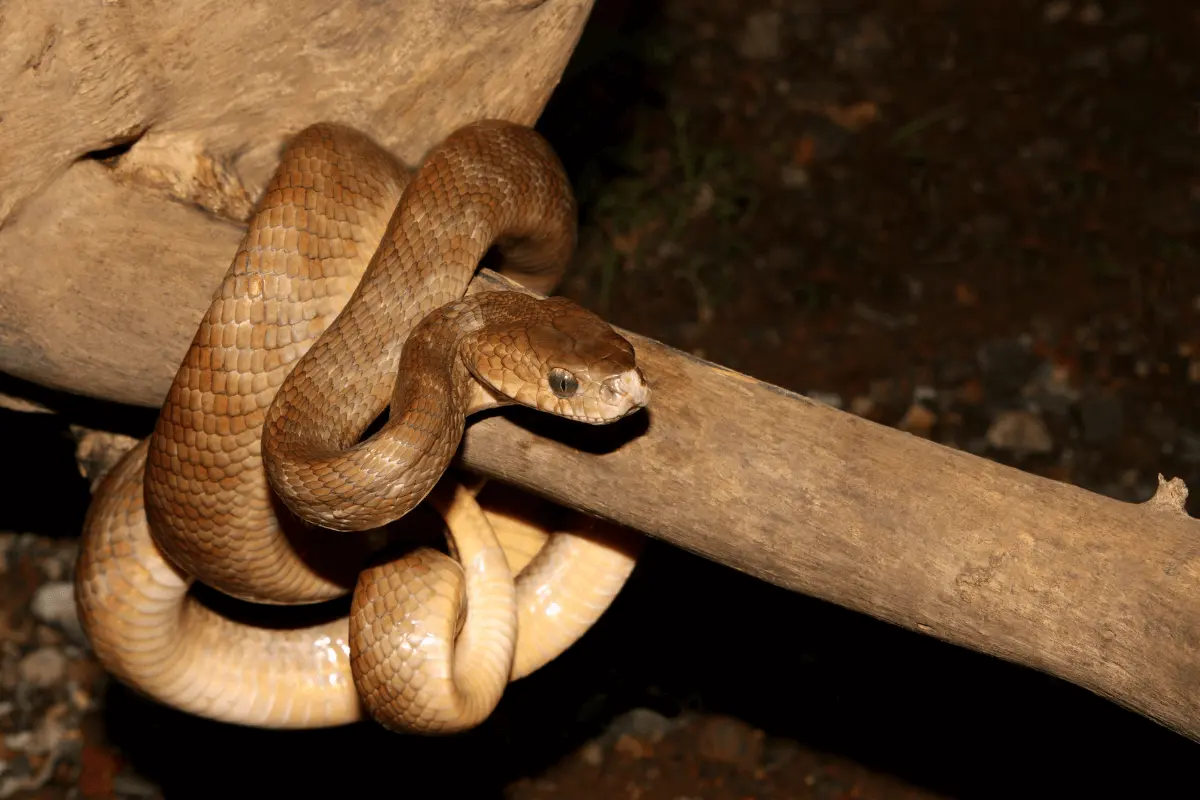
This snake lives in Papua New Guinea, eastern Indonesia, and the Solomon Islands, where it is a good climber. This notorious invader has caused problems for the environment in places like Guam, mostly because it doesn’t have any native predators.
The Brown Tree Snake has a varied diet, including its favorite foods of birds and small mammals as well as caterpillars. It is able to successfully hunt caterpillars in the forest’s upper levels thanks to its sharp eyesight and nimble body.
Red-bellied Snake (Storeria occipitomaculata)
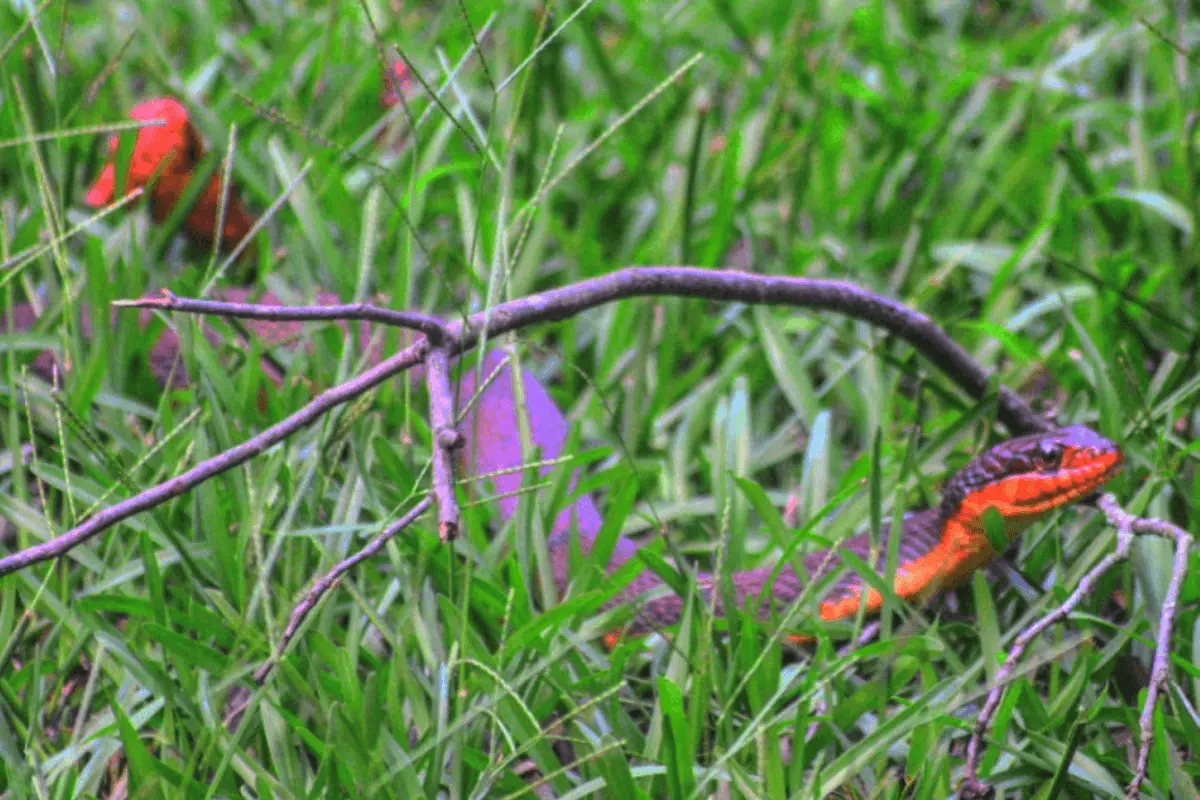
The red-bellied snake is a venomous snake species native to the eastern United States and Canada. This small, quiet creature has a red back like fall leaves and eats a lot of insects, including caterpillars.
The Red-bellied Snake may be tiny but has a huge appetite, regularly taking down caterpillars several times its size. It also eats snails and slugs, which it kills with a minor toxin before devouring.
Dekay’s Brown Snake (Storeria Dekayi)
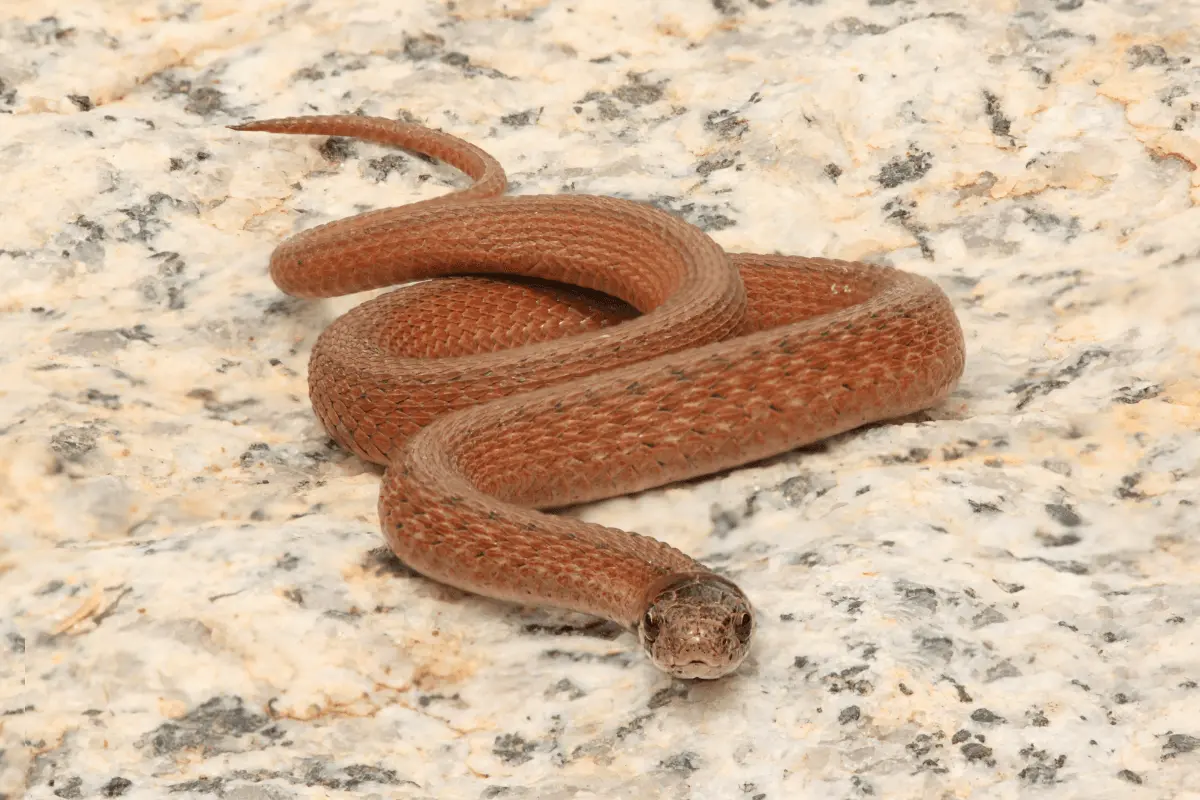
This brown or gray snake is known as Dekay’s Brown. It can be found all throughout North America. The habitats of the Dekay’s brown snake are quite varied. These range from wooded and grassy areas to urban parks and gardens.
It eats a wide variety of invertebrates, but caterpillars, slugs, and earthworms are the most common. It has small fangs in the back that release a mild venom that is enough to stop the wriggling caterpillars it eats.
Smooth Green Snake (Opheodrys Vernalis)
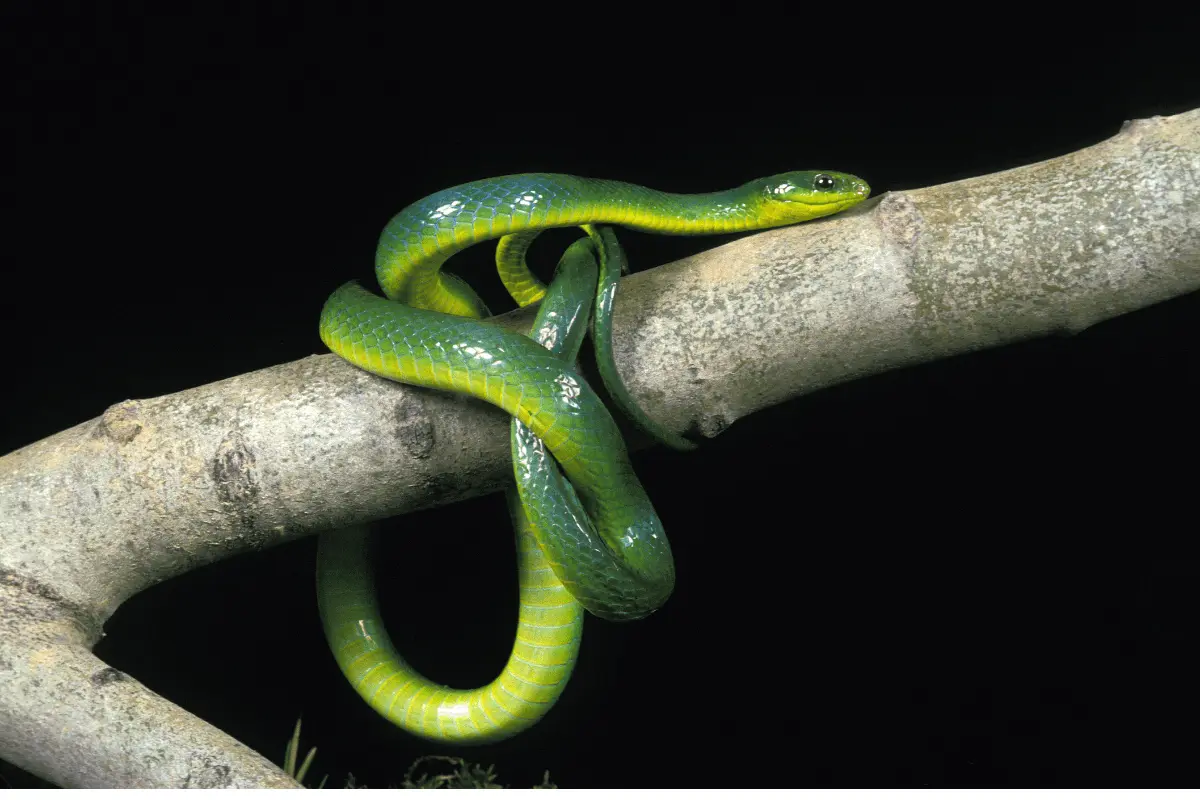
The Smooth Green Snake is closely related to the Rough Green Snake and shares its food preferences. This slim, bright green snake lives only in North America. It prefers environments with lots of vegetation, where it may hunt for a wide variety of insects. This snake’s food includes caterpillars, which it hunts with great success thanks to its outstanding camouflage and fast movements in the foliage.
Northern Ribbon Snake (Thamnophis Sauritus)
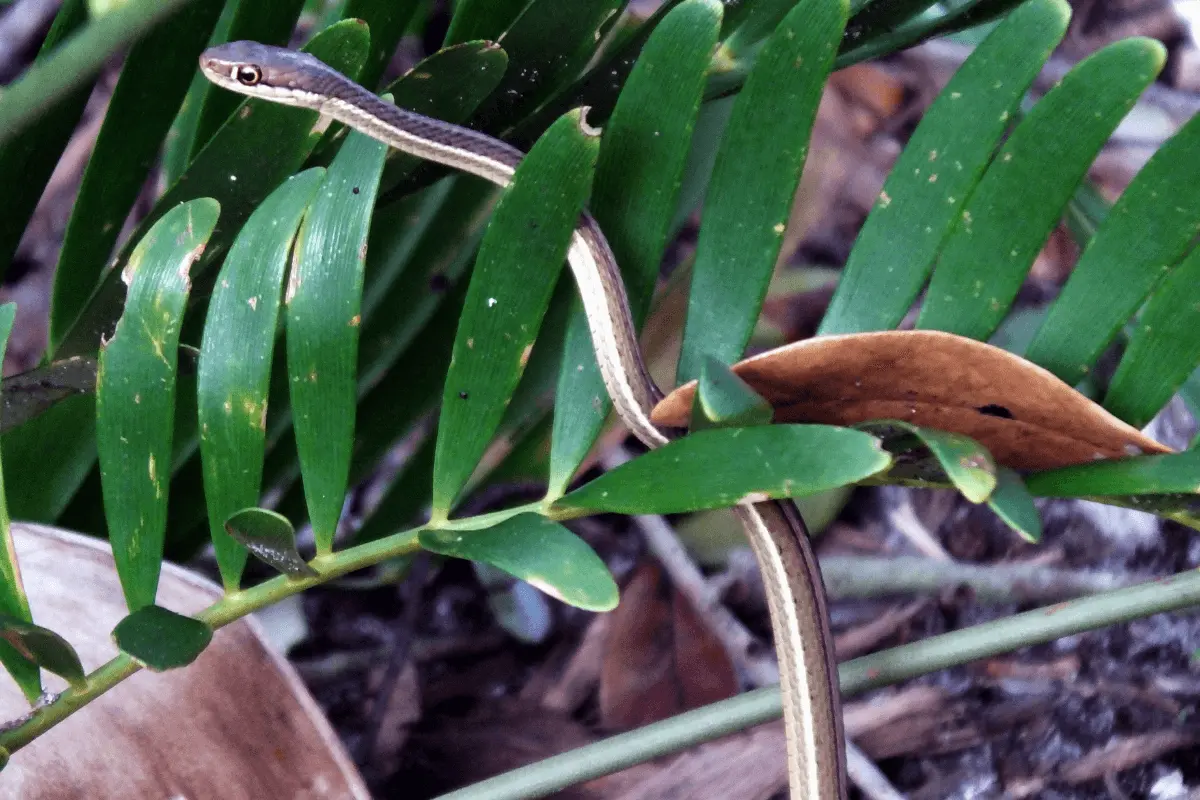
The Northern Ribbon Snake may be found in the eastern United States and southern Canada. It has a slender body and can be identified by its longitudinal stripes. This species is highly adapted to living close to and swimming in water. It eats largely amphibians and tiny fish. But it will occasionally eat caterpillars when hunting on land. The Northern Ribbon Snake is special among predators in its environment because it can hunt on land and in water.
The Role of Caterpillars in a Snake’s Diet
Even though they are small, caterpillars are an important part of a snake’s diet and play a big role in the health and well-being of these interesting animals.
Nutrition Source
Caterpillars are an important food source for many snake species. Caterpillars provide snakes with the protein and fat they require for development, energy, and general health. The soft bodies of caterpillars make them an ideal food source for some snakes, especially young or small snakes.
Population Control
Caterpillars are an important part of a snake’s diet as they help keep the population in check. The population of caterpillars can be controlled by snakes, preventing overgrazing of plants. This interaction between predators and prey helps keep the ecosystem in check.
Seasonal Food Source
The balance of predators and prey is essential to maintaining a healthy ecosystem. Some snake species depend heavily on invertebrates like caterpillars during the warmer months when these insects are in abundance. This availability is especially important for the survival and reproduction of snakes at these times.
Culinary Versatility
Snakes can get a wide variety of nutrients from caterpillars because of the many different kinds of caterpillars. There is a wide range of nutritional benefits that snakes may receive from eating caterpillars of various types.
Bioaccumulation Monitor
Since caterpillars can collect poisons from the plants they eat. Snakes that eat them may act as a bioaccumulation monitor of the environment. A natural alarm system and a decrease in snake populations may indicate an increase in environmental contaminants.
Conclusion
Snakes and caterpillars are linked in the ecosystem, which shows how amazing nature is. Caterpillars may not seem important, but they are an important part of the diet of many snake species. They provide food and help keep snake populations in check. These interactions are more complicated than simple hunter-prey ties because they show how camouflage and mimicry work.
Their impact on snake populations is further highlighted by the fact that caterpillars are in abundance at certain times of the year. So, the interaction between the snake and the caterpillar shows how complex and interconnected the natural world is. It also reminds us of each species’ important parts in keeping the balance and health of our planet’s many ecosystems.
